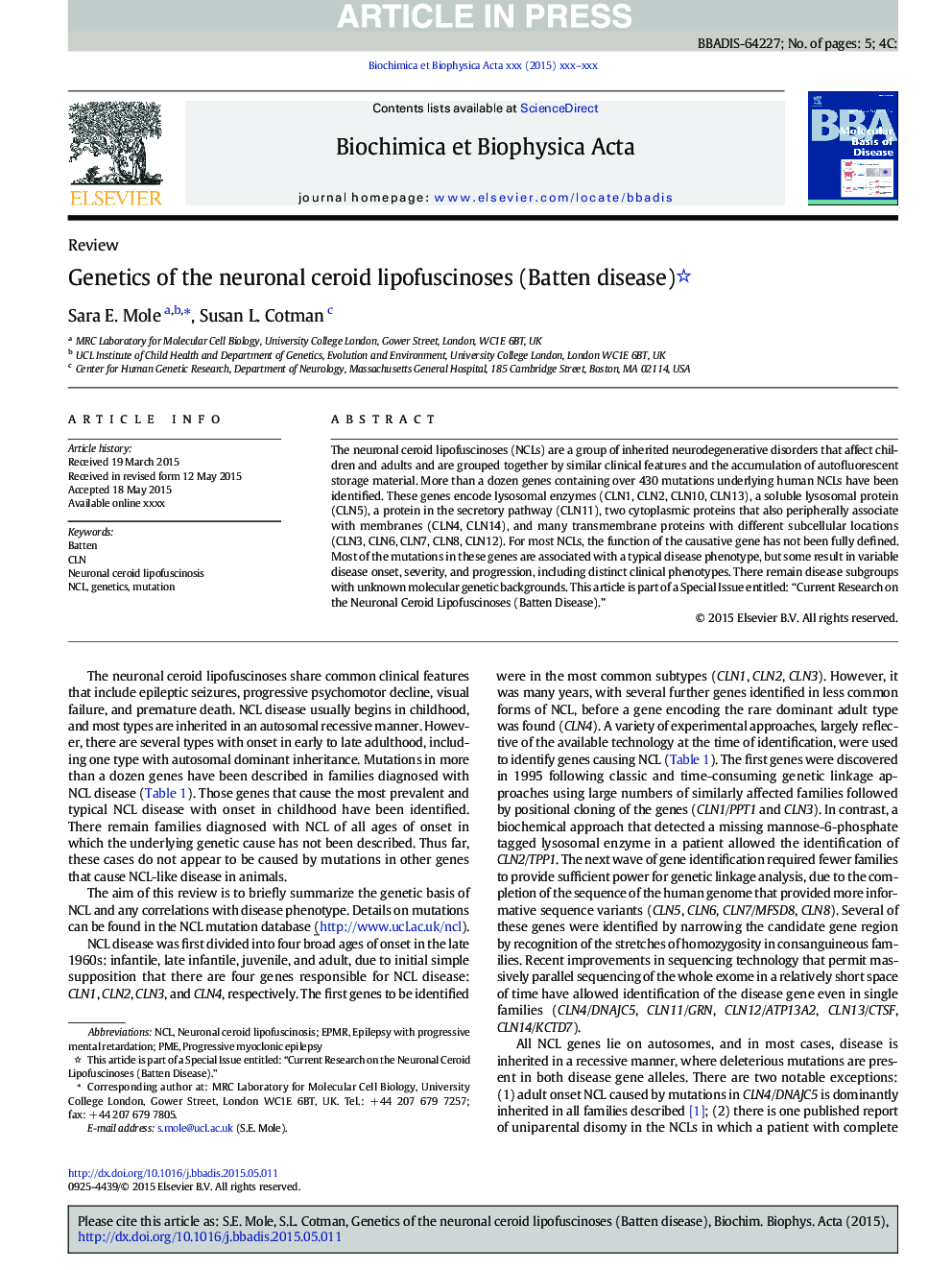| Article ID | Journal | Published Year | Pages | File Type |
|---|---|---|---|---|
| 8259564 | Biochimica et Biophysica Acta (BBA) - Molecular Basis of Disease | 2015 | 5 Pages |
Abstract
The neuronal ceroid lipofuscinoses (NCLs) are a group of inherited neurodegenerative disorders that affect children and adults and are grouped together by similar clinical features and the accumulation of autofluorescent storage material. More than a dozen genes containing over 430 mutations underlying human NCLs have been identified. These genes encode lysosomal enzymes (CLN1, CLN2, CLN10, CLN13), a soluble lysosomal protein (CLN5), a protein in the secretory pathway (CLN11), two cytoplasmic proteins that also peripherally associate with membranes (CLN4, CLN14), and many transmembrane proteins with different subcellular locations (CLN3, CLN6, CLN7, CLN8, CLN12). For most NCLs, the function of the causative gene has not been fully defined. Most of the mutations in these genes are associated with a typical disease phenotype, but some result in variable disease onset, severity, and progression, including distinct clinical phenotypes. There remain disease subgroups with unknown molecular genetic backgrounds. This article is part of a Special Issue entitled: “Current Research on the Neuronal Ceroid Lipofuscinoses (Batten Disease).”
Related Topics
Life Sciences
Biochemistry, Genetics and Molecular Biology
Ageing
Authors
Sara E. Mole, Susan L. Cotman,
